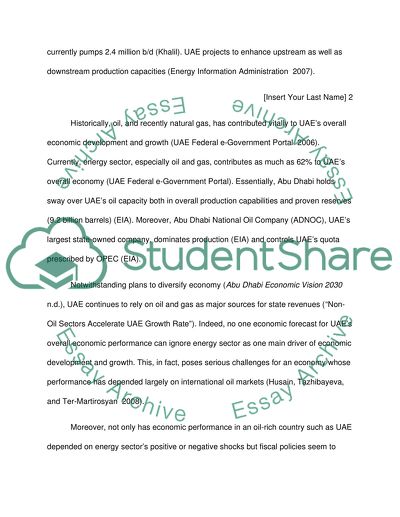Cite this document
(Oil and Energy Industry in UAE Term Paper Example | Topics and Well Written Essays - 1478 words, n.d.)
Oil and Energy Industry in UAE Term Paper Example | Topics and Well Written Essays - 1478 words. Retrieved from https://studentshare.org/macro-microeconomics/1507889-oil-and-energy-industry-in-uae
Oil and Energy Industry in UAE Term Paper Example | Topics and Well Written Essays - 1478 words. Retrieved from https://studentshare.org/macro-microeconomics/1507889-oil-and-energy-industry-in-uae
(Oil and Energy Industry in UAE Term Paper Example | Topics and Well Written Essays - 1478 Words)
Oil and Energy Industry in UAE Term Paper Example | Topics and Well Written Essays - 1478 Words. https://studentshare.org/macro-microeconomics/1507889-oil-and-energy-industry-in-uae.
Oil and Energy Industry in UAE Term Paper Example | Topics and Well Written Essays - 1478 Words. https://studentshare.org/macro-microeconomics/1507889-oil-and-energy-industry-in-uae.
“Oil and Energy Industry in UAE Term Paper Example | Topics and Well Written Essays - 1478 Words”, n.d. https://studentshare.org/macro-microeconomics/1507889-oil-and-energy-industry-in-uae.


